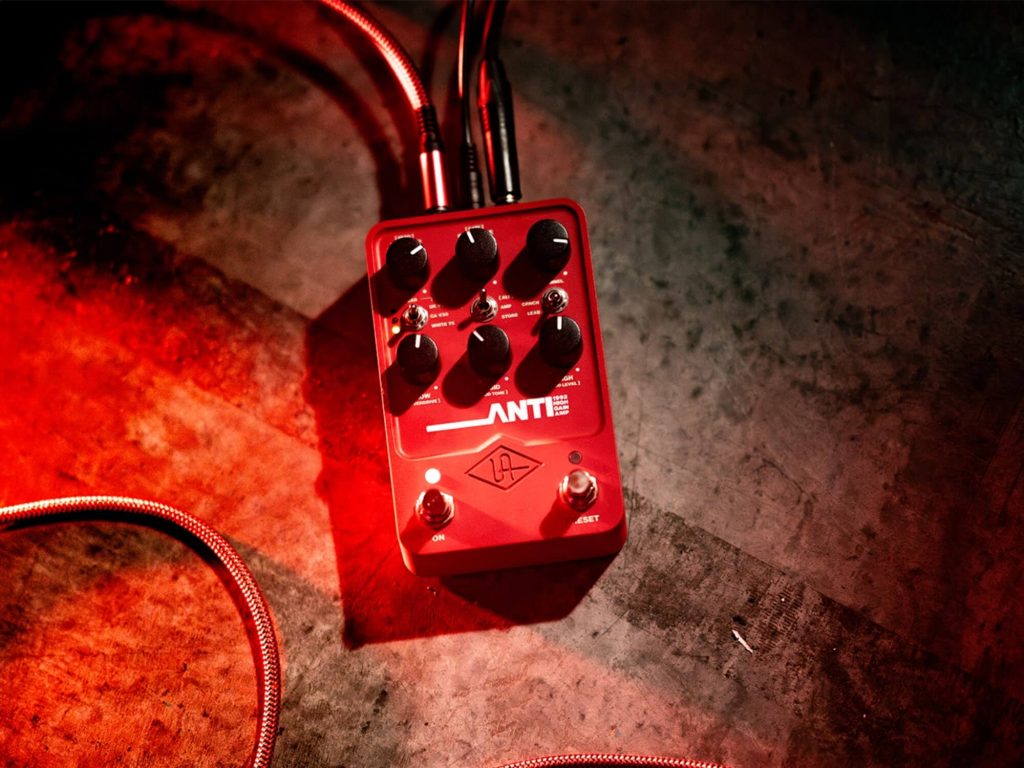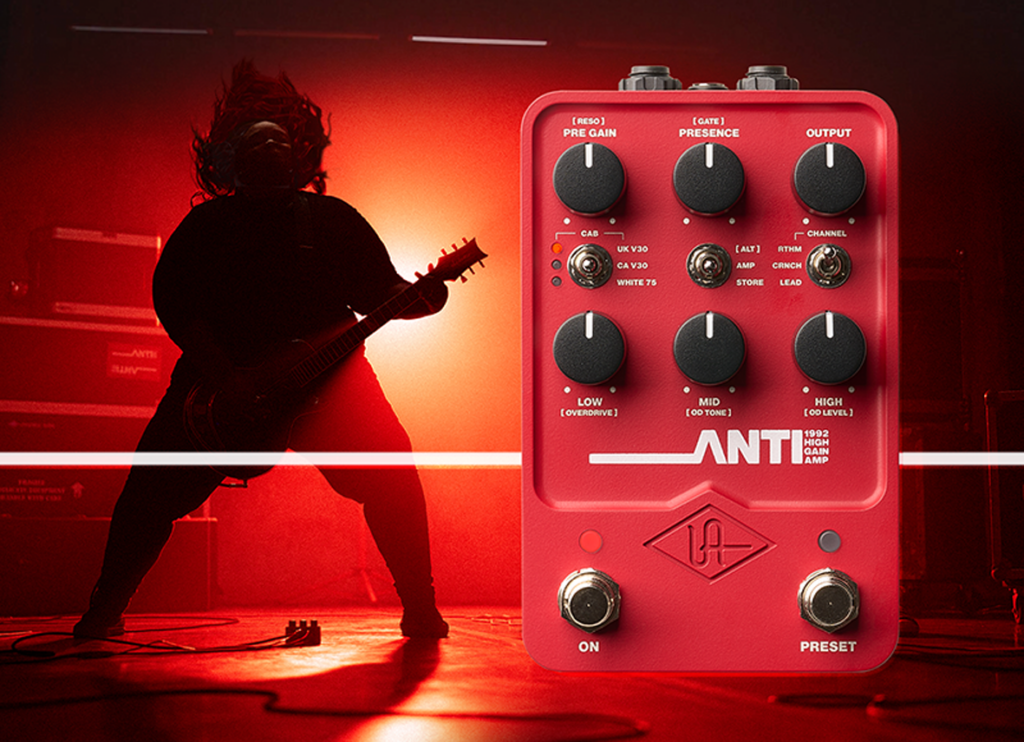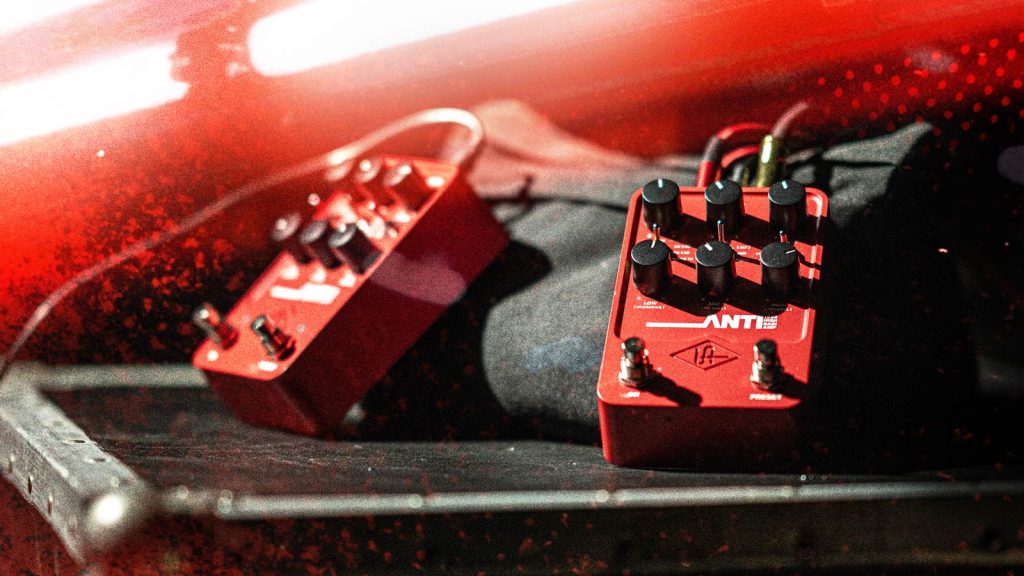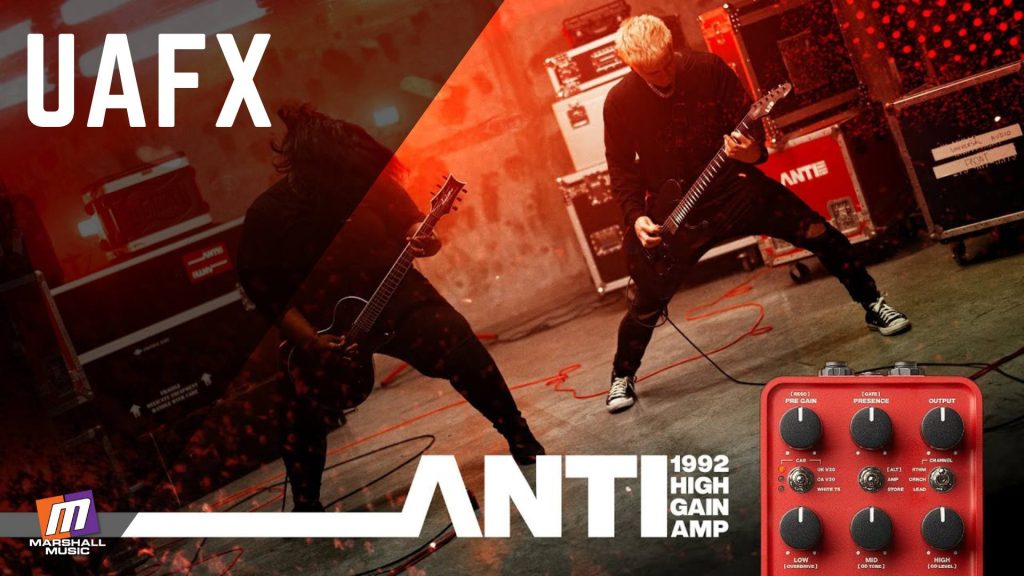Okay, so I’ve been chasing that elusive “amp-in-a-box” tone for what feels like an eternity. You know the sound – the kind that makes your guitar sing with a certain aggression, a touch of hair, and a whole lot of attitude. I’ve cycled through countless overdrives and distortions, each promising to be “the one.” Then, the Universal Audio UAFX Ante 1992 landed on my pedalboard, and let me tell you, things got interesting.
Right out of the box, the Ante 1992 oozes quality. It’s got that solid, reassuring weight that you expect from UA, and the classic stompbox form factor fits neatly amongst my other sonic companions. The controls – Output, Gain, Bass, Mid, Treble, and the all-important Mode switch – feel substantial and offer a good amount of resistance, making precise adjustments a breeze.

But let’s get down to the real reason this pedal piqued my interest: it’s UA’s take on the legendary British amp tones of the early ’90s. We’re talking those iconic high-gain sounds that defined a generation of rock music. And honestly? They’ve nailed it.
The Mode switch is where the magic happens. Flipping between Lead, Crunch, and Clean is like having three distinct amps at your feet.
Lead Mode is where I’ve spent most of my time, and for good reason. This mode delivers that searing, harmonically rich distortion that just begs for power chords and soaring solos. It’s got that unmistakable growl and sustain that makes every note feel thick and powerful. What impresses me most is the clarity – even at higher gain settings, individual notes within a chord remain defined, and there’s a real sense of depth to the tone. It’s not just a wall of fuzz; it’s a sculpted, articulate distortion that responds beautifully to my picking dynamics. Dig in, and it snarls; ease off, and it cleans up surprisingly well.

Crunch Mode dials back the intensity but keeps the character. This is your classic British overdrive – thick and punchy, perfect for chunky rhythm work and bluesy leads. It’s got that satisfying mid-hump that helps your guitar cut through the mix, and it’s incredibly responsive to the volume knob on my guitar. I can go from a slightly broken-up clean tone to a full-on rock crunch just by adjusting my guitar’s output. This mode has quickly become my go-to for those classic rock anthems.
The Clean Mode was a pleasant surprise. While the Ante 1992 is primarily marketed as a distortion pedal, this mode offers a surprisingly pristine and slightly boosted clean tone. It adds a subtle warmth and fullness to my signal, making it a great option for pushing a slightly overdriven amp into even sweeter territory or simply adding a bit of girth to a clean sound. It’s not the main attraction, but it’s a genuinely useful addition.

What truly sets the Ante 1992 apart for me is the authenticity. UA has a reputation for meticulous modeling, and it shines through here. It doesn’t just sound like a generic distortion pedal; it genuinely captures the nuances and feel of those legendary amplifiers. There’s a certain “chime” and “grind” that’s just right, the kind of sonic fingerprint that’s hard to replicate.
Of course, no piece of gear is perfect. If I had to nitpick, I’d say that the Ante 1992 is squarely focused on those specific British high-gain and overdrive tones. If you’re looking for something radically different, like a scooped American high-gain or a fuzzy vintage distortion, this might not be your first stop. However, for anyone chasing that iconic ’90s British rock sound, the Ante 1992 is an absolute must-try.

